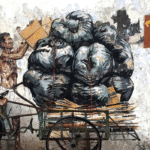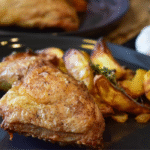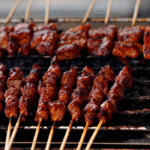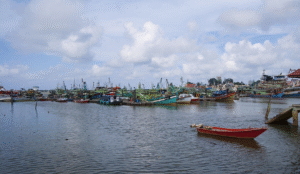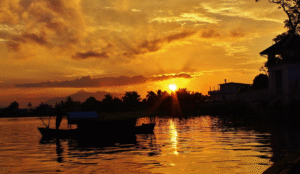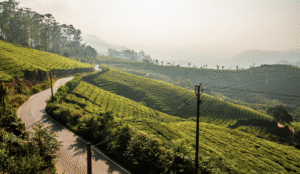Introduction
For tourists visiting Malaysia, one of the biggest advantages is the country’s well-developed and relatively affordable transportation system. With a variety of options ranging from modern rail systems and intercity buses to ride-hailing apps and even water taxis, navigating Malaysia transport is both practical and enjoyable. Whether you’re exploring the bustling streets of Kuala Lumpur or heading to serene coastal towns, understanding how to get around can significantly enhance your travel experience.
This guide will walk you through the essentials of Malaysia transport, offering tips, must-know routes, and smart tricks to help you make the most of your journey. From airport transfers to the best ways to explore rural areas, this comprehensive overview is tailored especially for tourists.
Frequently Asked Questions (FAQ)
1. What is the best way to travel around Malaysia?
The best way to travel around Malaysia depends on where you’re going. For long distances between cities like Kuala Lumpur, Penang, or Johor Bahru, buses, domestic flights, or trains (ETS) are convenient and affordable. In cities, you can use Grab, taxis, or public transport like the MRT and LRT. If you want more freedom, renting a car is a great option, especially for exploring rural areas or islands.
2. What is the transportation in Malaysia for foreigners?
Foreigners in Malaysia have access to a wide range of transportation options, including:
- Public transport like MRT, LRT, Monorail (in major cities), and buses
- Intercity trains for comfortable travel between regions
- Ride-hailing apps like Grab
- Budget airlines like AirAsia for fast domestic flights
It’s easy and relatively cheap to get around, and most signage is in English, which helps a lot for international visitors.
3. Is there Uber in Malaysia?
No, Uber no longer operates in Malaysia. It exited the market in 2018. Instead, Grab is the main ride-hailing app used across the country. It works similarly to Uber and is reliable, safe, and widely available in both urban and suburban areas.
4. How to travel cheaply in Malaysia?
To travel cheaply in Malaysia:
- Use buses and trains instead of taxis or flights for long distances.
- In cities, take public transport (like MRT or RapidKL buses) instead of private cars.
- Download and use Grab for affordable and transparent ride pricing.
- Eat at hawker stalls or local kopitiams instead of restaurants in touristy areas.
- Book transport and hotels in advance, especially during peak seasons.
With smart planning, Malaysia is one of the most budget-friendly destinations in Southeast Asia.
5. Is there a Grab in Malaysia?
Yes! Grab is the most popular ride-hailing service in Malaysia. You can use it to book cars, taxis, and even food delivery. It’s safe, cashless, and easy to use for both locals and tourists. Just download the app, enter your pickup and drop-off locations, and you’re ready to go—no need to worry about haggling or language barriers.
Understanding the Basics of Malaysia Transport
Malaysia transport infrastructure includes multiple modes, each suited for different travel needs. The primary types include:
- Trains: Comprising KTM (Keretapi Tanah Melayu) intercity trains, the Light Rail Transit (LRT), Mass Rapid Transit (MRT), and Monorail systems in urban centers.
- Buses: RapidKL in the Klang Valley, plus long-distance intercity bus services like Plusliner and Transnasional.
- Taxis and E-hailing: Traditional red-and-white taxis coexist with e-hailing services like Grab, Maxim, and InDriver.
- Ferries and Boats: Particularly important in island destinations like Langkawi and Penang.
Malaysia transport systems are relatively affordable and are increasingly integrated to make transfers easier.
The country is also investing heavily in expanding its transportation network. The MRT Putrajaya Line, for example, is a recent addition that has made commuting in Klang Valley even more accessible. Additionally, integrated transportation terminals are popping up in more cities to make intercity travel smoother and more efficient Malaysia transport system.
Malaysia’s diverse terrain—ranging from urban sprawl to dense jungle—requires a flexible approach to transport. That’s why both high-tech metro systems and traditional boats are part of the national network in Malaysia transport. As infrastructure improves, connectivity between regions also becomes better, offering tourists wider and easier travel options.
Major Transport Hubs Tourists Should Know
Understanding key transit hubs helps in planning an efficient itinerary:
- Kuala Lumpur Sentral (KL Sentral): The nation’s main railway hub. You can transfer between intercity trains, LRT, MRT, airport rail link, and buses.
- Pudu Sentral and Terminal Bersepadu Selatan (TBS): Major bus terminals connecting Kuala Lumpur to other states.
- Penang Sentral: A hub for ferries, trains, and buses, perfect for tourists exploring northern Malaysia.
- Johor Bahru Sentral: Connects southern Malaysia to Singapore, offering rail and bus options.
These hubs are tourist-friendly, with English signage and ticket counters, making navigation less intimidating even for first-time visitors. Some terminals even offer luggage storage, food courts, and information desks to enhance convenience.
In addition, major Malaysia transports airports like KLIA and Penang International Airport are also transport hubs in their own right. These serve not just international flights but also act as gateways to domestic destinations. Airports are increasingly well-connected to city centers via express trains, shuttle buses, and ride-hailing services.
Getting Around Major Cities
When planning your travels, understanding Malaysia transport options can make your journey smoother, more cost-effective, and enjoyable. From urban trains to heritage rickshaws, the country’s transportation systems offer flexibility for all types of travelers.
Kuala Lumpur
LRT/MRT/Monorail: These rail systems are part of Malaysia transport infrastructure and are efficient,cost-effective, and ideal for sightseeing They connect major attractions, shopping hubs, and business districts.
Grab (e-hailing): A reliable part of Malaysia transport for tourist, especially for short trips and late-night returns when trains may not be running.
Hop-On Hop-Off Buses: Tailored for tourists, these buses offer flexible and comprehensive coverage of the city’s highlights in a single day.
Penang (George Town)
Rapid Penang Buses: A vital piece of Malaysia transportin penang, these buses connect major tourist attractions, neighborhoods, and the airport.
Trishaws: While more touristy, they provide a charming way to explore George’s Town Heritage areas, enhancing the local Malaysia transport experience.
Penang Ferry: A scenic and nostalgic transport mode, connecting Penang Island to Butterworth on the mainland and forming part of the broader Malaysia transport network.
Langkawi
Car Rentals: A top choice in the Malaysia transport landscape on Langkawi, especially for travelers looking for independence and flexibility.
Motorbike Rentals: Affordable and fun, though an international license is required—a common aspect of Malaysia transport rules for foreign tourists.
Sabah & Sarawak (Borneo)
Minivans and Express Buses: These are essential modes of Malaysia transport for intercity travel in East Malaysia.
Boats: In Sarawak and parts of Sabah, boats are crucial for reaching riverine areas and island excursions, showcasing the diversity of Malaysia transport options.
4WD Rentals: Necessary for off-road routes into jungles and rural areas, often used by eco-tourists and adventurers exploring Malaysia’s wild heart.
General Travel Tips
Traffic Congestion: In cities like Kuala Lumpur and Penang, Malaysia transport can be affected by heavy traffic during peak hours (7-9 AM and 5-9 PM). To avoid delays, plan trips during off-peak times and prioritize public transport where possible.
Slow Travel Options: In heritage-rich places like Melaka, slow travel is encouraged through bicycle rentals and guided rickshaw rides, both charming forms of Malaysia transport that promote deeper cultural engagement.
Eco-conscious Travel: With the rise of eco-tourism, more travelers are choosing sustainable Malaysia transport options like walking tours, local buses, and community-run transport systems.
Public Transport in Malaysia: Tips for Tourists
- Get a Travel Card: The Touch ‘n Go card simplifies payment for buses, trains, and tolls.
- Plan with Apps: Use Moovit, Google Maps, or MyRapid for real-time info.
- Avoid Rush Hour: Peak hours (7-9 AM and 5-7 PM) can be crowded.
- Stay Hydrated: Air-conditioning is strong on most public transport but weather remains humid.
- Have Small Change: Some local buses and taxis don’t accept large bills.
Public transport in Malaysia is safe and reliable. Female travelers can also use designated women’s coaches in certain trains, adding an extra layer of comfort and safety.
If you’re traveling with children or elderly companions, plan your routes in advance and allow more time for transfers. Most stations have escalators and elevators, but not all are fully accessible.
Tourist-Friendly Routes and Scenic Journeys
- KTM ETS Train from KL to Ipoh or Penang
- A high-speed and comfortable ride through scenic countryside.
- Jungle Railway (East Coast Line)
- A slow but beautiful route through dense rainforest from Gemas to Tumpat.
- KL to Genting Highlands
- Bus + Awana Skyway cable car for a unique mountain experience.
- Sabah Scenic Drive: Kota Kinabalu to Kundasang
- Gorgeous mountain views along well-paved roads.
- Sarawak River Cruise in Kuching
- Offers a relaxed perspective of the capital’s riverfront.
- Melaka River Cruise and Heritage Bus
- Combines historic sites and riverside views in one loop.
- Peninsular East Coast Road Trip
- Travel along the coastal highway from Kuantan to Terengganu and Kelantan for views of traditional villages, beaches, and mosques.
- Kuching to Mulu National Park (via Miri)
- Involves a mix of air and land travel, perfect for adventure seekers eager to explore caves and rainforest ecosystems.
For travelers with extra time, taking the longer scenic routes is worth it. These routes not only offer picturesque views but also the chance to interact with locals in less tourist-heavy areas.
Airport Transfers and Intercity Travel
- KLIA/KLIA2: Use the KLIA Ekspres train to reach the city in under 30 minutes.
- Langkawi and Penang: Airport taxis and e-hailing apps are widely available.
- Domestic Flights: For long distances (e.g., KL to Borneo), flying is efficient and cheap with airlines like AirAsia and Firefly.
When traveling between states, trains and long-distance buses are budget-friendly alternatives to flying. Apps like Easybook and BusOnlineTicket make booking intercity buses easy and convenient.
VIP buses offer more comfort with reclining seats, charging ports, and sometimes onboard snacks. If you’re traveling overnight, this can be a restful alternative to a hotel stay.
Car Rental and Driving in Malaysia
Renting a car is ideal for off-the-beaten-path adventures, especially in places like Cameron Highlands, Sabah, and Sarawak. Key points to consider:
- Drive on the left
- Use Waze or Google Maps
- Watch for motorcyclists and sudden rain
For nature lovers, renting a car allows access to national parks, waterfalls, and remote beaches. However, make sure your license is valid and recognized in Malaysia, and always have a physical or digital map as a backup.
Car rentals are also available at most airports and city centers. Most vehicles are automatic and in good condition, with English-language GPS systems available upon request. For rural areas, ensure your vehicle is equipped with a spare tire and that fuel stations are accessible along your route.
For tourists traveling as a group or family, renting a car can also be more economical compared to purchasing multiple bus or train tickets.
Local Etiquette and Safety Tips
- Be patient: Public transport may not always run on schedule.
- Respect seat priority: Leave reserved seats for the elderly or pregnant.
- Secure your belongings: Pickpocketing is rare but possible in busy areas.
- Dress modestly: Especially in more conservative rural towns.
Tourists should also note that smoking is banned in most public transport areas, including train platforms and bus terminals.
Safety is generally high on Malaysia’s transportation systems. However, it’s advisable to avoid isolated bus stops at night and to inform someone if taking long-distance night buses.
Environmentally Friendly Travel Options
Malaysia is increasingly focusing on green mobility:
- Electric Buses: Available in cities like Putrajaya and parts of KL.
- Bike Sharing Programs: Limited but growing in urban centers.
- Walking Tours: Best enjoyed in George Town or Melaka.
Tourists interested in sustainable travel can also look into community-based tourism programs, where local transport and eco-guides are employed to reduce environmental impact.
New eco-initiatives include solar-powered boats on rivers in Kuching and electric scooters for rent in certain tourist zones. Some hotels even offer free or discounted shuttle services to reduce car usage.
Day Trips and Weekend Escapes with Public Transport
Planning a short getaway without the stress of driving? Malaysia transport options—ranging from modern trains to long-distance buses—make it easy to enjoy quick trips to charming towns, nature escapes, and seaside destinations. Whether you’re a local or a visitor, the flexibility and reach of Malaysia transport networks let you experience more without needing your own vehicle.
Below are some easy and enriching weekend escapes and day trips made possible through public transit:
1. Kuala Lumpur to Port Dickson
Fancy a beach day? With Malaysia transport, it’s simple. From Terminal Bersepadu Selatan (TBS) in Kuala Lumpur, take a direct bus to Seremban. Then, a local taxi or e-hailing ride will take you to the beach haven of Port Dickson. Known for its relaxed coastal vibe, historical sites, and seaside food stalls, it’s a favorite spot for a short beach retreat.
Malaysia transport hubs like TBS make it incredibly easy to connect to different parts of Negeri Sembilan, even for spontaneous getaways.
2. Kuala Lumpur to Fraser’s Hill
For a cooling mountain escape, Fraser’s Hill is a quiet gem. First, take a bus from KL to Kuala Kubu Bharu, a scenic town nestled in the hills. From there, you can hire a taxi or use a Malaysia transport rental option to reach Fraser’s Hill.
The journey itself is part of the adventure—Malaysia transport through lush, green highlands is both scenic and relaxing. The area is perfect for hiking, birdwatching, and unwinding in a colonial hill station atmosphere.
3. Penang to Taiping
With a mix of heritage and nature, Taiping in Perak is an excellent getaway from Penang. Hop on the ETS train, a top-rated option in Malaysia transport, or take a Rapid Penang bus.
The efficient Malaysia transport system lets you reach Taiping comfortably in just a couple of hours. Once there, enjoy the lush Taiping Lake Gardens, charming museums, and the well-kept Taiping Zoo—all of which reflect the town’s serene charm and colonial legacy.
4. Kuala Lumpur to Ipoh
Ipoh is a popular heritage town that’s well-connected by Malaysia transport, especially via the ETS train. In about 2.5 hours, you’ll reach a city full of old-world charm, limestone caves, street art, and famous white coffee.
With Malaysia transport being punctual and clean, even a day trip here is worth it. You’ll have enough time to explore colonial architecture, visit cave temples, and try the best of Ipoh’s local cuisine—all without needing a car.
5. Penang to Alor Setar
Another great destination accessible via Malaysia transport is Alor Setar, Kedah’s historic capital. Buses and trains run regularly between Penang and Alor Setar, offering a comfortable ride through paddy fields and traditional towns.
Thanks to the reliability of Malaysia transport, you can explore attractions like Zahir Mosque, Muzium Padi, and vibrant local markets without worry. It’s a great place to experience northern Malaysian culture and history.
Why Use Malaysia Transport for Short Getaways?
Malaysia transport systems—especially the ETS railway, intercity buses, and urban transit hubs—are affordable, timely, and cover a wide range of destinations. Whether you’re exploring the beaches of Port Dickson, the hills of Fraser’s, or the cultural spots of Ipoh and Taiping, Malaysia transport offers convenient options.
Some key reasons travelers choose Malaysia transport for weekend escapes:
Affordability: Train and bus tickets are budget-friendly compared to car rentals or flights.
Accessibility: Major terminals and stations are located in city centers with easy transfers.
Comfort: Modern trains and buses include air conditioning, charging ports, and onboard services.
Eco-Friendly: Using Malaysia transport reduces carbon emissions, making your travel more sustainable.
Pro Tips for Planning Day Trips with Malaysia Transport
Book ETS train tickets early, especially for weekend travel.
Use platforms like KTMB mobile app, BusOnlineTicket, or redBus Malaysia for schedules.
Consider combining transport types—for example, ETS + Grab—to reach remote destinations.
Travel light for easier boarding and flexibility.
Always check the latest updates on Malaysia transport routes and timing.
Malaysia transport makes short holidays accessible, affordable, and enjoyable for everyone. Whether you’re chasing waterfalls, exploring old towns, or relaxing on a beach, your next escape is just a ride away. Embrace the diversity of Malaysia—one bus or train at a time.
Conclusion
Navigating Malaysia doesn’t have to be stressful or expensive. With the wide array of options available through Malaysia transport systems, tourists can explore the country safely, affordably, and comfortably. By understanding how to leverage buses, trains, ride-hailing, and even boats, you’ll be well-equipped to experience the diversity and beauty of this Southeast Asian gem.
Whether you’re hopping from Kuala Lumpur’s urban jungle to the idyllic islands of Langkawi, or exploring the deep jungles of Borneo, knowing your transportation options allows for a richer, smoother journey. So pack your bags, download your apps, and get ready to hit the road—Malaysia awaits.
Touring the country by road, rail, or river not only brings convenience but also insight into local life. Engaging with drivers, chatting with fellow passengers, and witnessing the landscape unfold from your window all add to the adventure. With planning and an open mind, Malaysia transport can turn a regular holiday into an unforgettable exploration.
